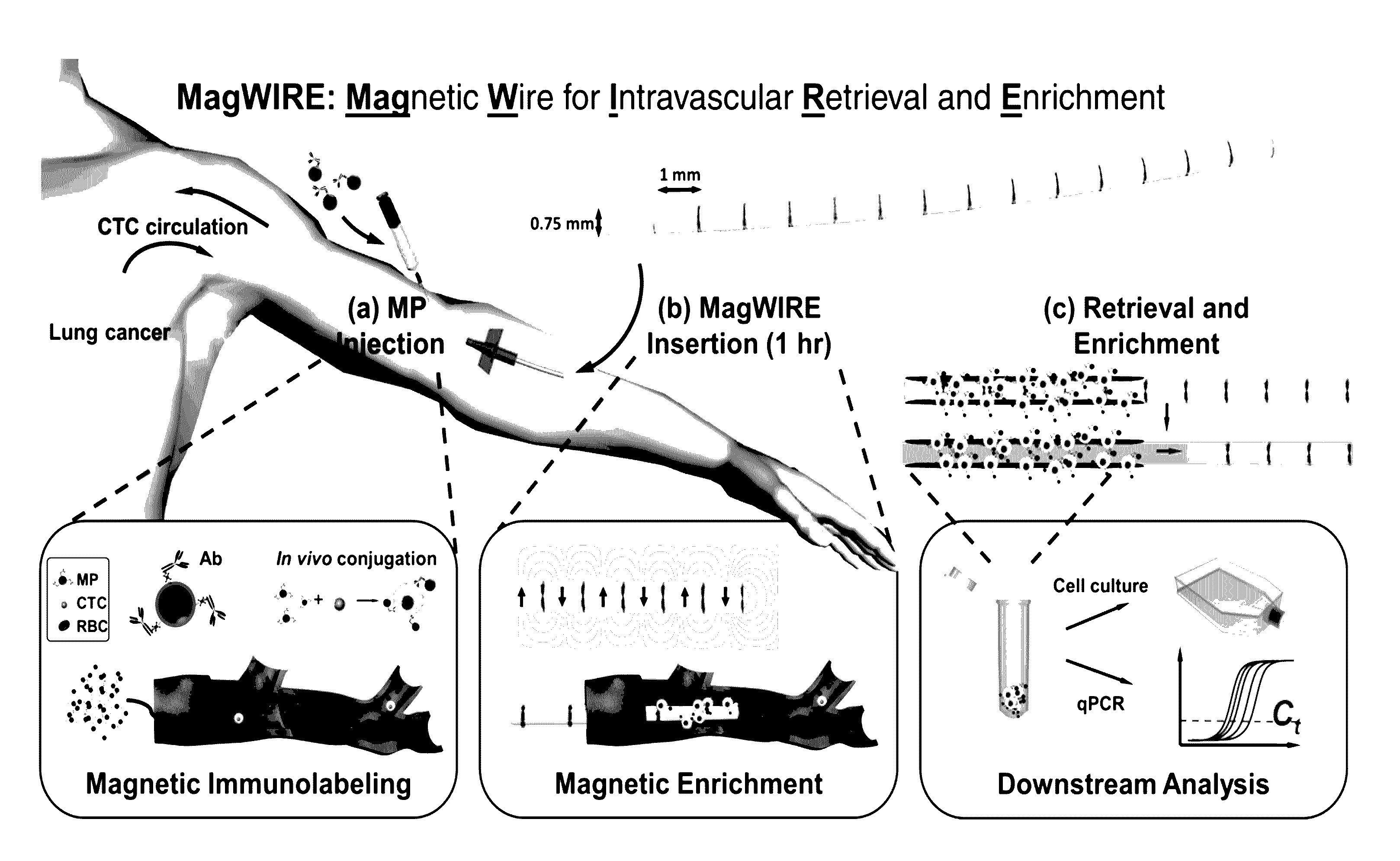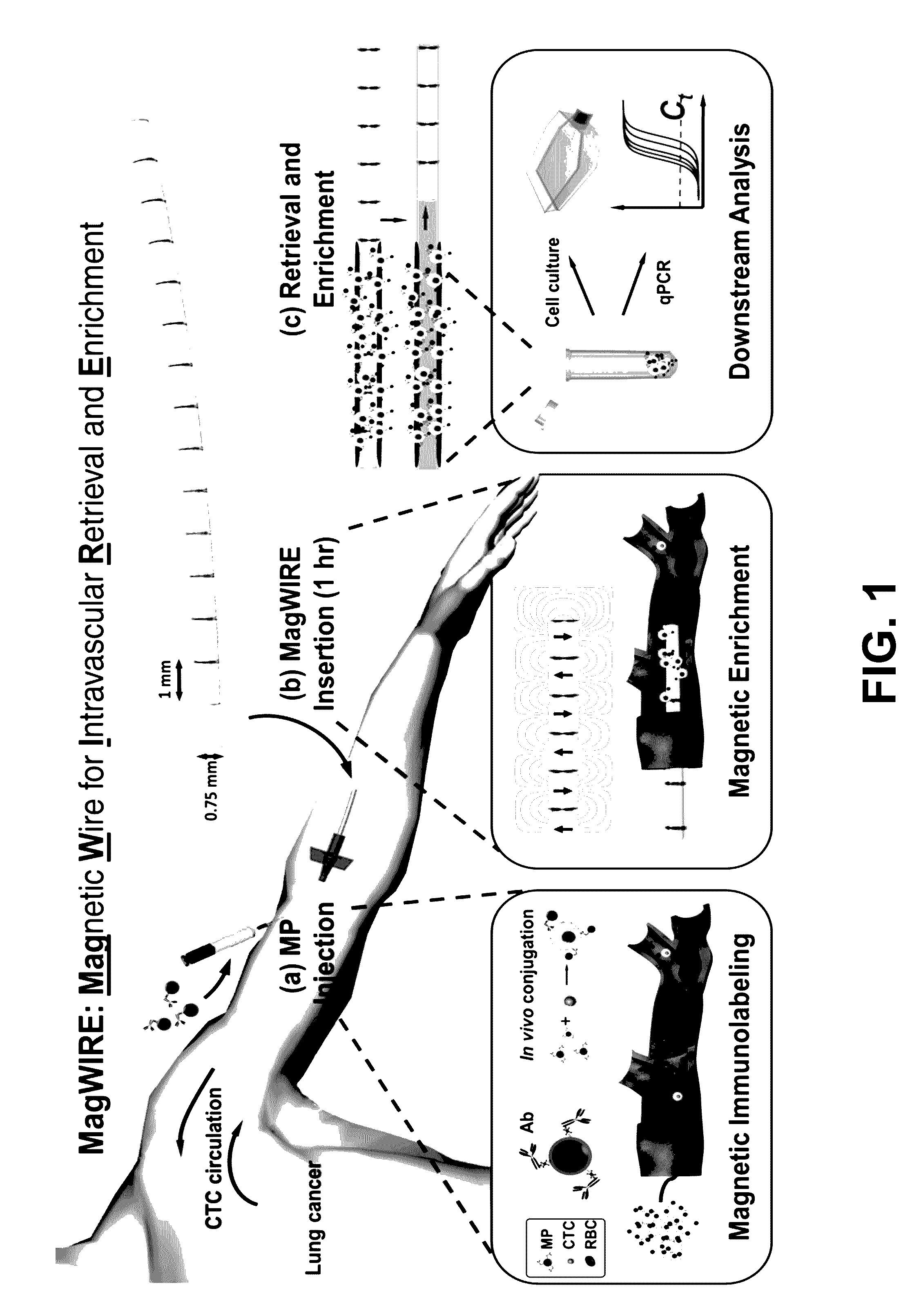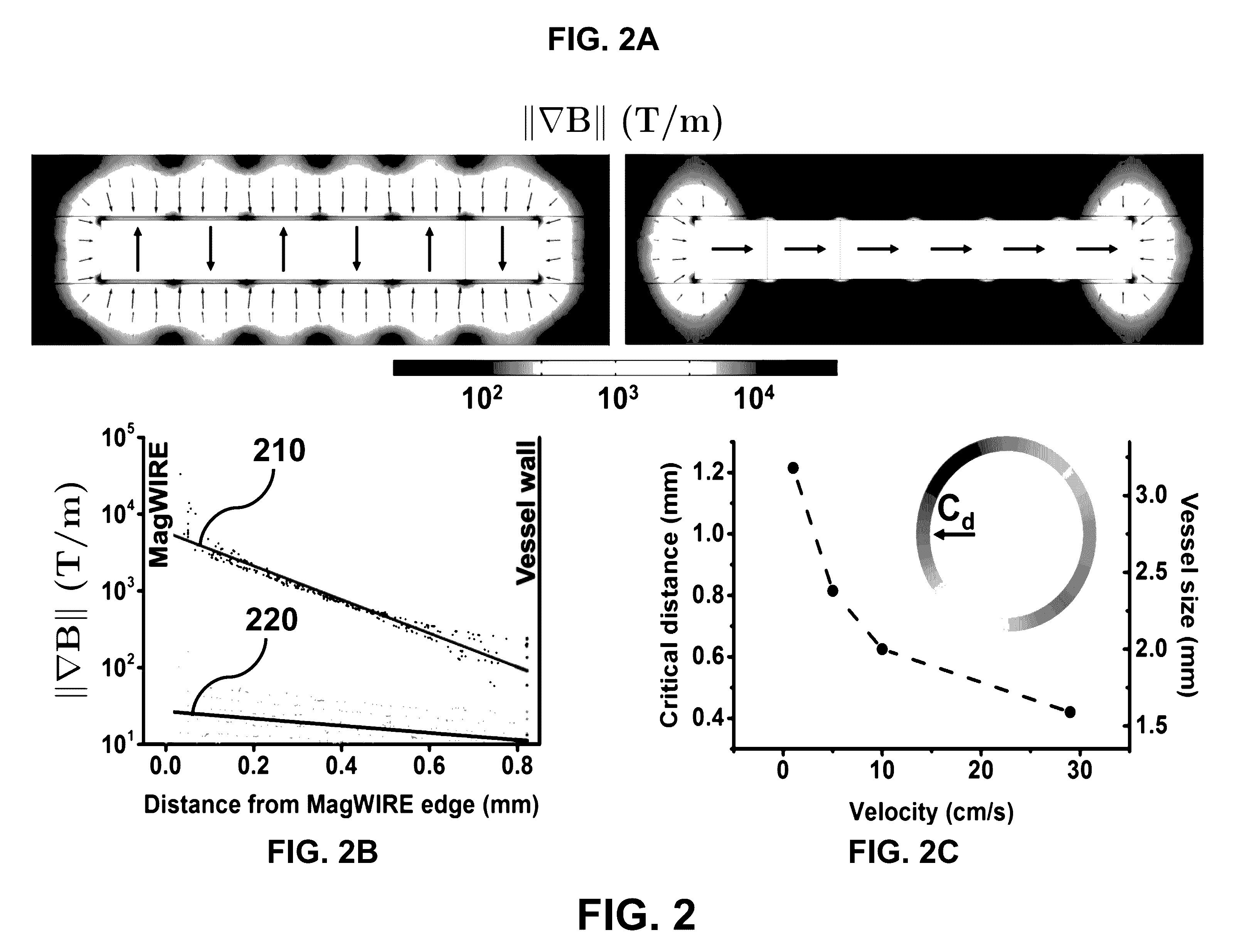Intravascular Magnetic Wire for Detection, Retrieval or Elimination of Disease-Associated Biomarkers and Toxins
a magnetic wire and biomarker technology, applied in the field of medical devices and methods for detection, retrieval or elimination of disease-associated biomarkers and toxins, can solve the problems of limiting the application of ctc analysis in the field of intravascular magnetic wires, unable to provide the transcriptomic, proteomic and drug susceptibility information afforded by ctc analysis, and unable to achieve the guidance of treatment, etc., to achieve the effect of increasing the length of the mag
- Summary
- Abstract
- Description
- Claims
- Application Information
AI Technical Summary
Benefits of technology
Problems solved by technology
Method used
Image
Examples
Embodiment Construction
[0015]With this invention we provide a device and method for in vivo magnetic enrichment of rare biomarkers such as CTCs. The device is herein referred as the MagWIRE, which stands for Magnetic Wire for Intravascular Retrieval and Enrichment (FIGS. 1 and 5). The MagWIRE is a magnetic wire encased in a biocompatible plastic sheath. Its small diameter and flexibility allow it to be easily introduced into and retrieved from a blood vessel without causing occlusion or trauma, similar to medical guidewires that are used in vascular interventional procedures.
[0016]The design of the MagWIRE maximizes the surrounding volume from which targets can be magnetically captured by achieving high local field gradients along its entire length without relying on an external magnetic field source.
[0017]FIG. 1 shows an overview of the MagWIRE device and method for detection, retrieval or elimination of disease-associated toxins and biomarkers. A patient is injected with antibody-coated magnetic particl...
PUM
 Login to View More
Login to View More Abstract
Description
Claims
Application Information
 Login to View More
Login to View More - R&D
- Intellectual Property
- Life Sciences
- Materials
- Tech Scout
- Unparalleled Data Quality
- Higher Quality Content
- 60% Fewer Hallucinations
Browse by: Latest US Patents, China's latest patents, Technical Efficacy Thesaurus, Application Domain, Technology Topic, Popular Technical Reports.
© 2025 PatSnap. All rights reserved.Legal|Privacy policy|Modern Slavery Act Transparency Statement|Sitemap|About US| Contact US: help@patsnap.com



